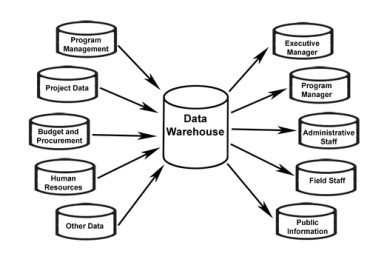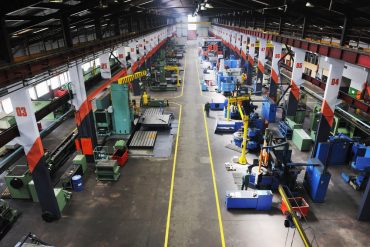
A look at the key elements that go into a strategy to improve manufacturing throughput efficiency. Bottom line: Leveraging advanced technologies such as IoT and industrial connectivity is essential to such efforts.
In the fast-paced and competitive world of manufacturing, improving throughput efficiency is a critical objective for staying ahead of the competition. To achieve this requires a strategic approach that begins with a thorough review of existing workflows and processes. This foundational step enables manufacturers to identify inefficiencies, formulate targeted plans to address them and leverage technology to optimize operations.
To that end, the first key element in improving throughput efficiency is a comprehensive review of current operations. This involves mapping out each step of the production process to understand how materials and information flow from start to finish. By conducting this review, manufacturers can pinpoint where bottlenecks occur, where equipment downtime is most frequent, and where waste is generated.
Specifically, some of the main areas to focus on to improve operational efficiency include:
Bottlenecks: By identifying production bottlenecks, manufacturers can make changes to streamline operational processes or elements of their manufacturing environment. For instance, if a particular machine frequently causes delays, it may require maintenance, upgrading, or replacement.
Downtime: Equipment downtime is a significant contributor to inefficiency in manufacturing. By implementing a thorough review process, manufacturers can determine the root causes of downtime, whether they be mechanical failures, maintenance issues, or operational inefficiencies. By addressing these issues, manufacturers can significantly increase the uptime of their equipment, leading to improved throughput.
Inferior parts: By analyzing the causes of rejected parts, manufacturers can implement quality control measures, adjust production processes, or provide additional training to workers to improve parts acceptance rates.
See also: New IoT Use Cases Improve Industrial Manufacturing Operational Efficiency
Leveraging Technology for Operational Assessment and Improvement
Manufacturers must leverage technology to assess current operations and implement improvements. Frequently, the Internet of Things (IoT) and industrial connectivity play a pivotal role.
Why? IoT and industrial connectivity technologies offer real-time insights into manufacturing processes, enabling manufacturers to monitor and optimize every aspect of their operations.
Specifically, they provide the real-time monitoring and data collection needed to identify problems and develop strategies to improve operations.
IoT devices installed on machinery and equipment can collect data on performance, usage, and condition monitoring in real time. This data provides valuable insights into how equipment is functioning and where inefficiencies may lie. For example, sensors can detect when a machine is operating outside of its optimal parameters, allowing for immediate adjustments to be made before issues escalate.
Having access to that data via industrial connectivity allows manufacturers to analyze the data and then predict when equipment is likely to fail. That enables a shift to predictive maintenance where maintenance is scheduled based on need. This proactive approach to maintenance reduces unexpected downtime and ensures that machines are operating at peak efficiency.
Furthermore, industrial connectivity enables better coordination and communication across the supply chain. Real-time data sharing allows manufacturers to optimize inventory levels, reduce lead times, and improve the overall flow of materials and information throughout the production process.
Other ways technology can be applied and assist in improving operational efficiency include:
Enhanced quality control: IoT sensors and cameras can inspect products during various stages of production, ensuring that defects are detected early and corrective actions are taken immediately. This reduces the number of defective products that reach the final stages of production, thereby improving throughput.
See also: The State of Manufacturing 2024: It’s Digital All the Way
Partnering with PTC
In the quest to enhance throughput efficiency, manufacturers increasingly turn to advanced technologies that provide comprehensive data management and insightful analytics. PTC Kepware and PTC ThingWorx can play a critical role in achieving these goals. These platforms offer robust solutions for connecting, analyzing, and optimizing manufacturing operations, leading to significant improvements in efficiency and productivity.
PTC Kepware is known for its robust industrial connectivity solutions, facilitating seamless communication between diverse hardware and software systems within a manufacturing environment. This capability ensures that all relevant data across the production floor are captured, providing a holistic view of operations. By integrating data from various sources, manufacturers can better understand how different elements of the production process interact and where inefficiencies may lie.
As such, with PTC Kepware, manufacturers can monitor their operations in real-time. This real-time visibility is crucial for identifying and addressing issues as they arise, preventing minor problems from escalating into major disruptions. And it enables predictive maintenance by continuously monitoring the condition of equipment and analyzing trends over time.
PTC ThingWorx complements Kepware by offering a robust platform for industrial IoT (IIoT) and analytics, turning raw data into actionable insights. Specifically, ThingWorx provides a comprehensive IoT platform that connects all IoT-enabled devices and systems within the manufacturing ecosystem. This integration allows for seamless data flow and coordination across all aspects of production, from supply chain management to final product assembly.
By leveraging ThingWorx’s real-time analytics, manufacturers can implement more rigorous quality control processes. IoT sensors can monitor operations throughout the end-to-end production cycle, providing a real-time overview of key performance indicators (KPIs).
The combination of the two solutions offers end-to-end visibility and control over manufacturing operations. The insights gained from the solutions can facilitate continuous improvement initiatives. That allows manufacturers to implement changes, monitor their impact, and refine processes continuously to achieve better results over time.
A Final Word
Improving throughput efficiency in manufacturing requires a strategic approach that begins with a thorough review of existing workflows and processes. By identifying bottlenecks, reducing equipment downtime, improving parts acceptance rates, and cutting waste, manufacturers can lay the groundwork for significant improvements.
Leveraging advanced technologies such as IoT and industrial connectivity further enhances these efforts by providing real-time insights, predictive maintenance, supply chain optimization, enhanced quality control, and energy management.
By integrating these elements into a comprehensive strategy, manufacturers can achieve sustained improvements in throughput efficiency, ensuring their competitiveness in the ever-evolving manufacturing landscape.
To learn more about IoT, industrial connectivity, and how to unlock lasting success with digital manufacturing solutions, download this guide.







